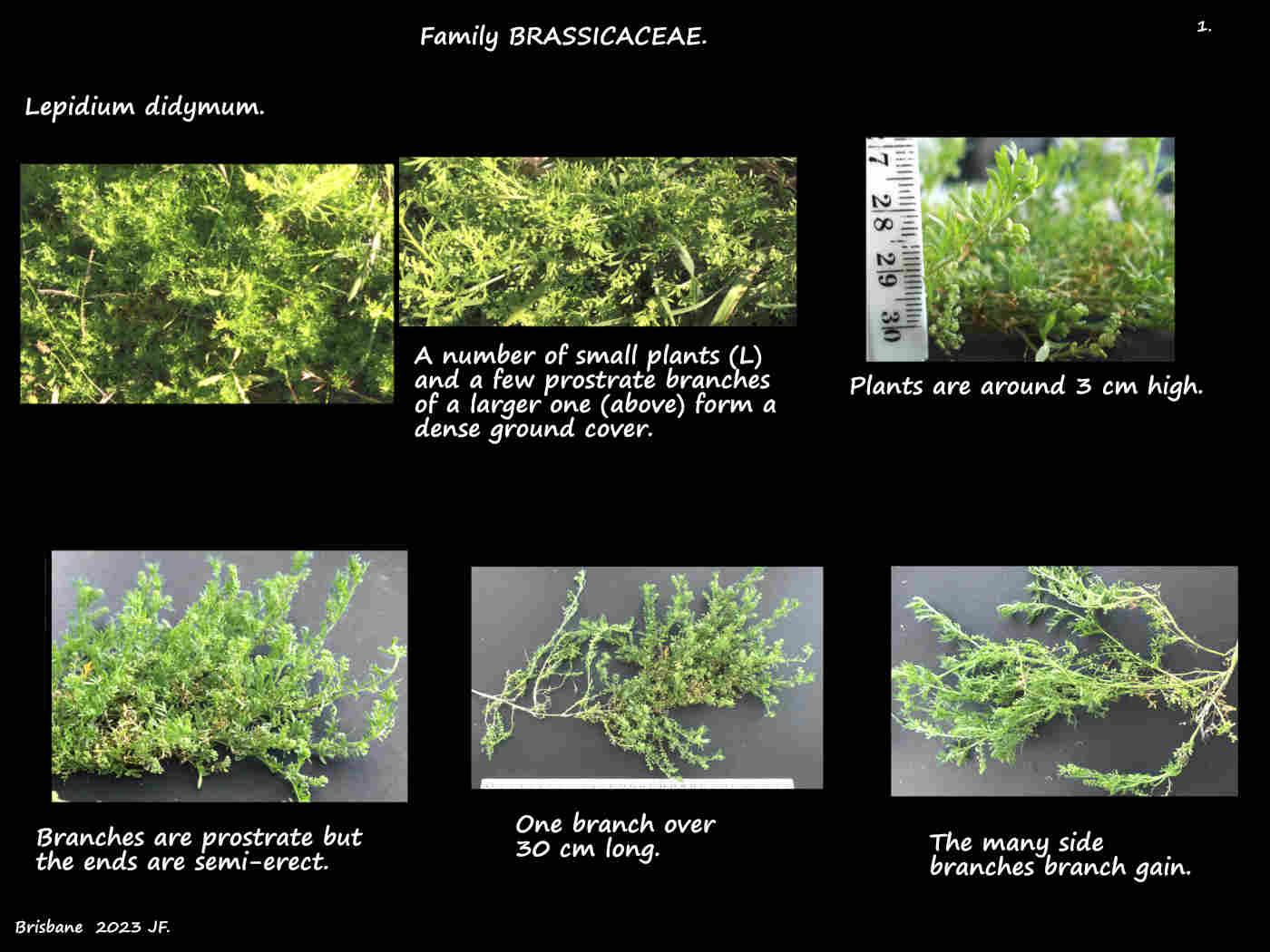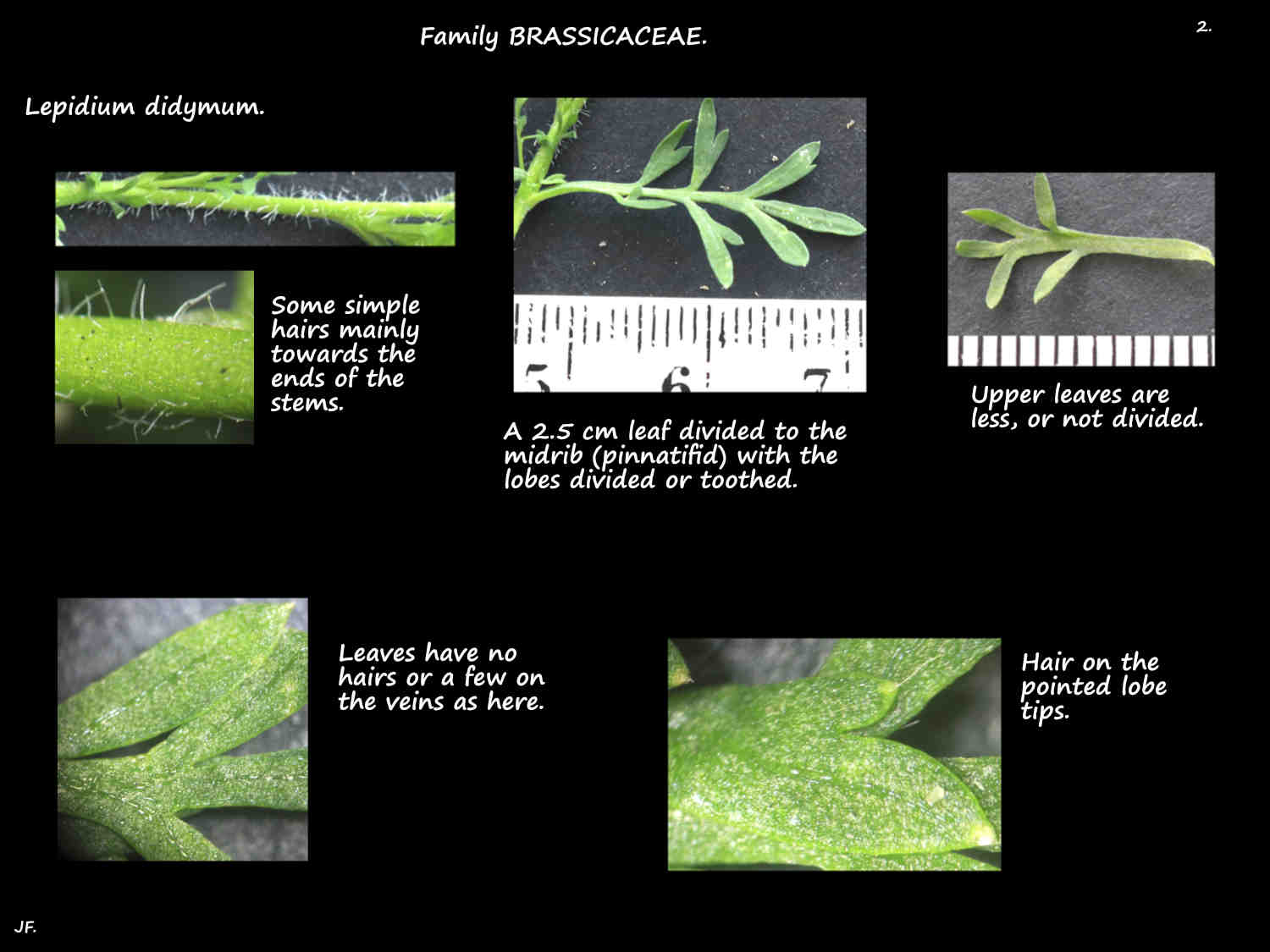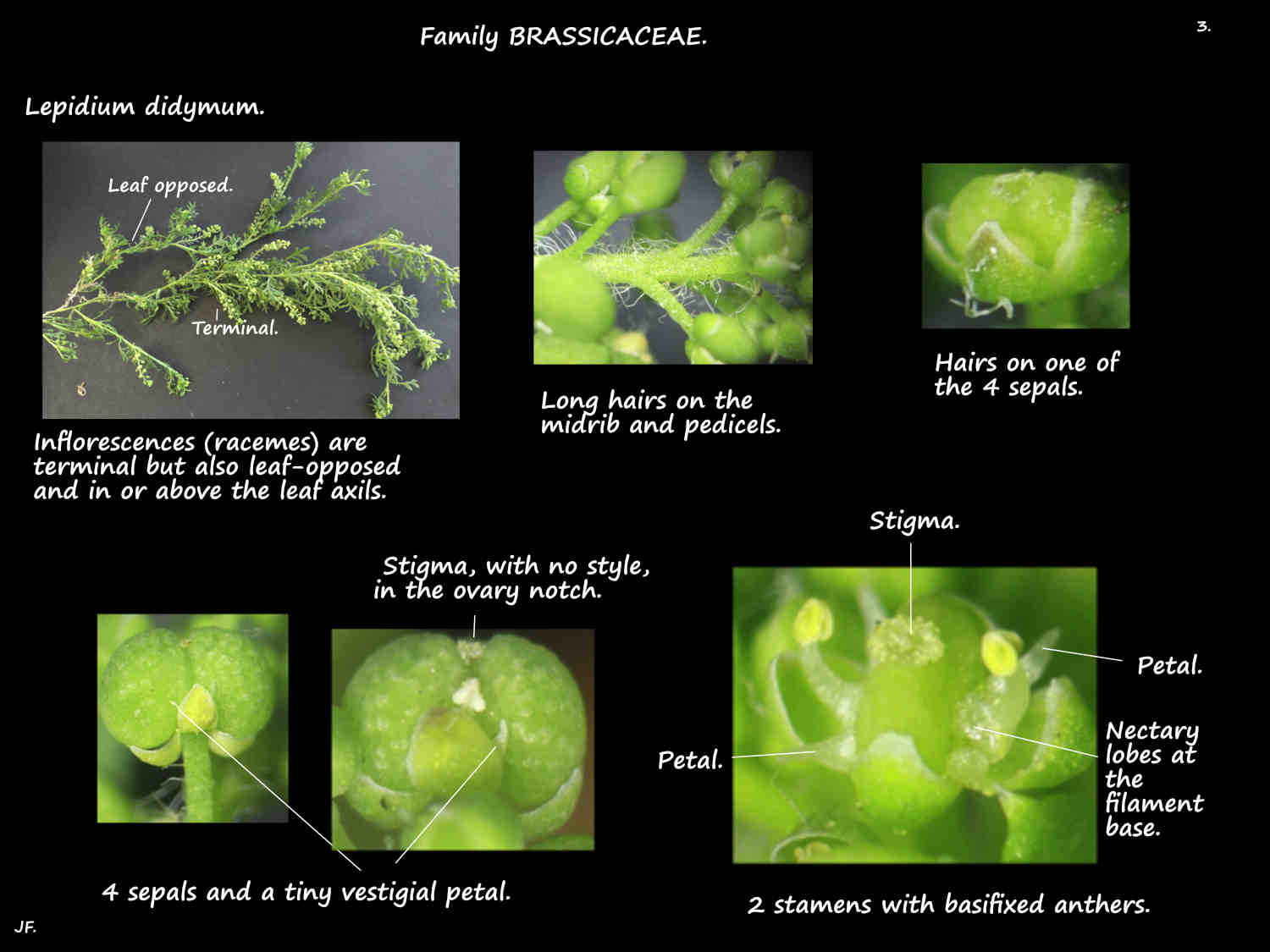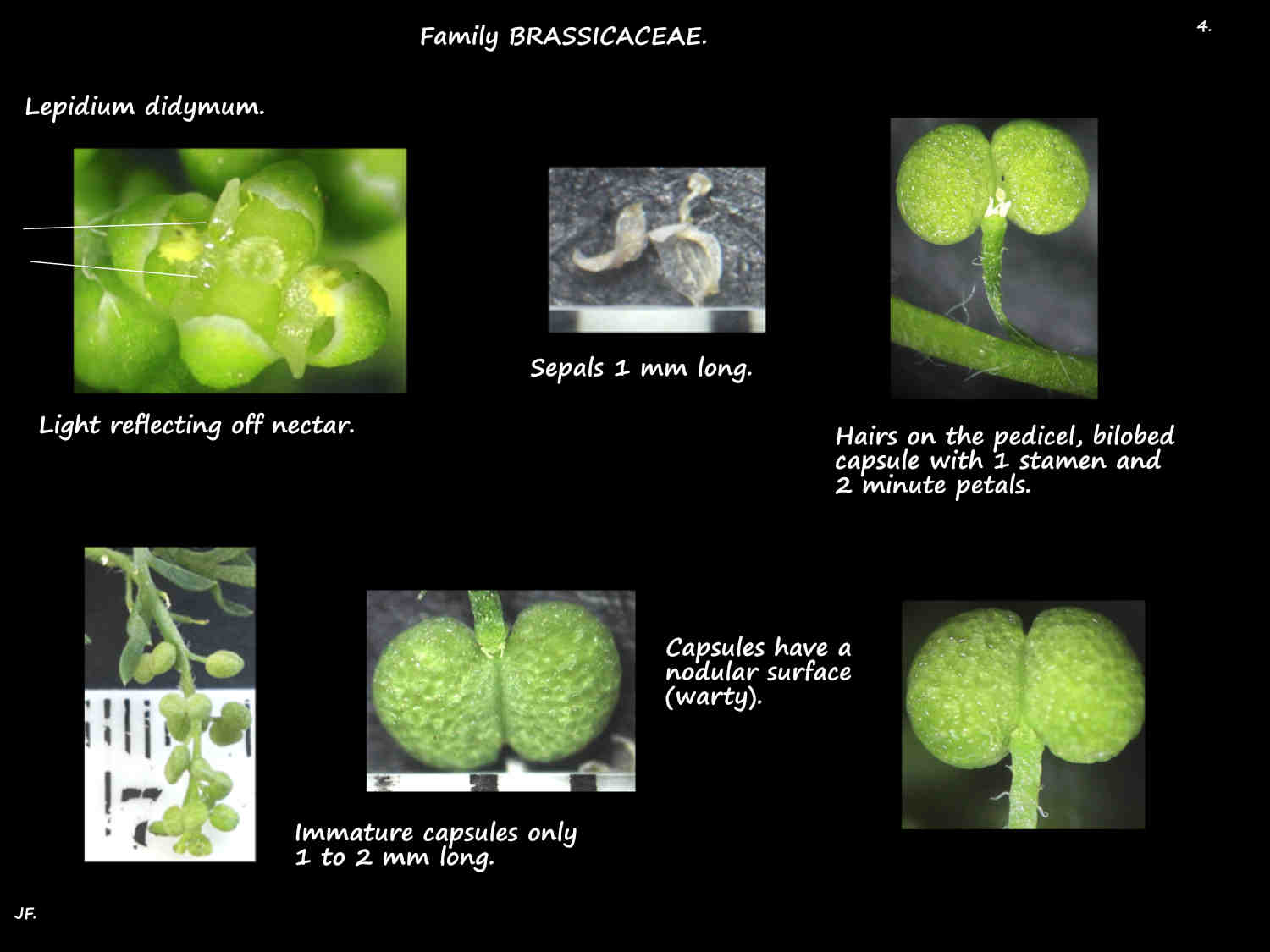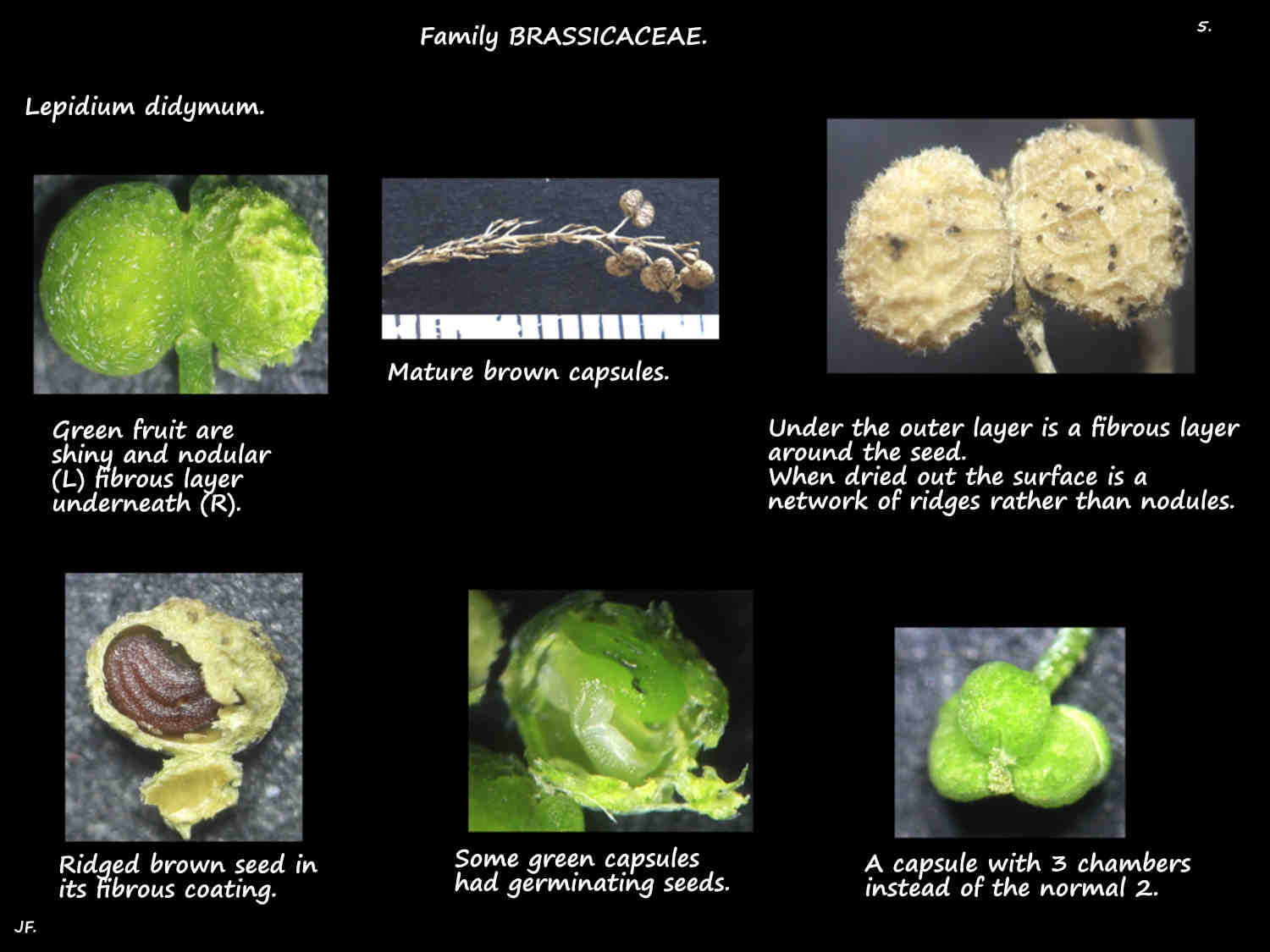Lepidium didymum.
Bittercress, Wild carrot or Lesser wart-cress, native to Europe is widely naturalised in S.E. Queensland.
The annual to perennial plants have stems, up to around 30 cm long that radiate out from a taproot.
Leaves at the base of the prostrate stems are up to 8 cm long and on a petiole.
Their blade is deeply divided and the divisions can extend to the midrib (pinnatifid) or near it (pinnatisect).
The lobes may be further divided.
The alternately arranged leaves get progressively smaller along the stem.
The more distal ones have no petiole and their blades are less divided.
Blades at the tip may be undivided.
There may be a few simple hairs on the upper part of the stem, petioles and on the veins on both blade surfaces.
Inflorescences are terminal racemes on the main and many side branches.
(Racemes have flowers, on a stalk (pedicel), along a midrib with the lower ones opening first.
The raceme continues to lengthen.)
There are hairs on the upper surface of the pedicels and on one sepal.
There are 4 green sepals, 1 to 2 mm long that may have a reddish tip.
There may be no petals or 4 vestigial white ones up to 0.5 mm long.
There are 2 median stamens (opposite the flattened sides of the ovary).
Occasionally there are 4 with the other 2 being laterals.
The white filaments have a broad base and yellow basifixed anthers.
The superior ovary, of 2 fused carpels has 1 locule divided into 2 by a false septum.
There is 1 ovule, with parietal placentation in each chamber.
There is no style with the stigma sitting in the small notch at the top of the ovary.
The fruit are septifragal capsules with the 2 valves (chamber walls) breaking away and leaving the septum intact.
On a pedicel up to 3 mm long they have a deep notch making them bi-lobed.
The green capsules, up to around 4.5 mm long have small rounded nodules on the surface (warty).
There are 2 seeds.
J.F.

